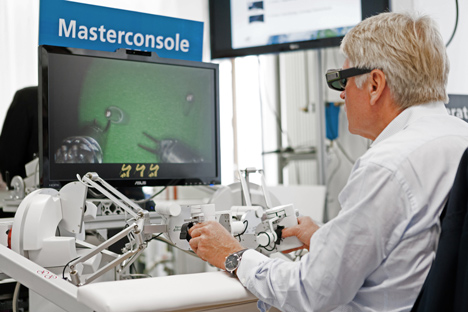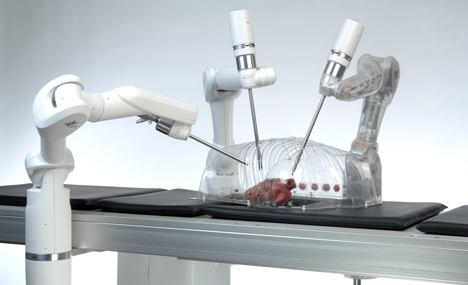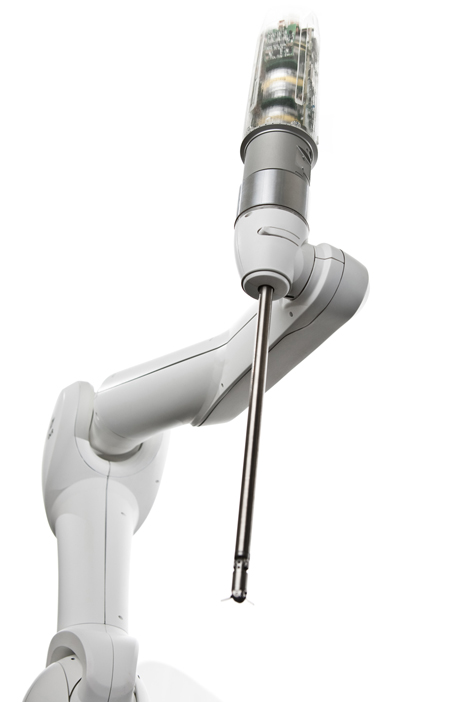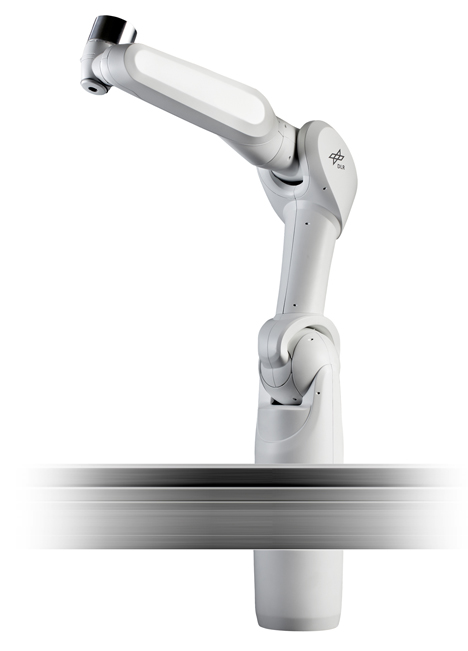Robot surgeons to operate on beating human hearts
News: robots could soon be operating on beating human hearts while a surgeon based in a different part of the world directs the procedure remotely, according to a designer working on a new generation of medical equipment.

The surgeon would see a static heart on a 3D screen and the robots would attune themselves to the heart's movement, overcoming many of the risks of existing heart surgery techniques.
"Our ultimate ambition is robot-supported surgery on the beating heart," said Tilo Wüsthoff, an industrial designer at German national aeronautics and space research centre DLR. "For the surgeon this means that he will see a virtually stabilised video picture of the beating heart. He can focus on his task while the robot follows the motion of the beating heart."

Surgeons sitting at a remote console would use telemanipulation to control the robot arms, allowing sophisticated operations to be carried out using minimally invasive surgery (MIS) techniques that require minimal incisions in the patient's skin.
Telemanipulation techniques would also allow surgeons on earth to operate on astronauts in space, Wüsthoff said. "Ensuring medical assistance for astronauts with telemanipulated robots is part of different visions for long-term space missions to remote locations such as Mars," he said.

MiroSurge, the surgery-performing robots developed by Wüsthoff, appear in the science fiction movie Ender's Game, which was released this month.The robots carry out a remote operation on Ender, the lead character, who is an astronaut fighting off an alien invasion of earth. "The robot removes an implant from [lead character] Ender's neck," said Wüsthoff.
Minimally invasive surgery is preferable to open surgery because there is less risk of infection and quicker recovery times. However complex operations such as heart surgery are difficult to carry out using MIS techniques, because the surgeon cannot see what is happening and because the of the movement of the beating heart.

Surgeons today use a heart-lung machine to take over the functions of the heart during surgery, but this is traumatic and risky to the patient. MicroSurge techniques would allow the patient's heart to continue beating normally while the surgeon would watch the operation on a 3D screen via an endoscope within the patient's body, which would show an apparently static heart.
"[It] allows the surgeon to focus on his medical skills," said Wüsthoff. "He can get back to being a surgeon instead of an operator of a complex technical system."
The MicroSurge robot arms would control slender surgical implements that would be inserted through small openings in the patient's skin. Several robots mounted around the operating table would work together to carry out surgery.
Here's a short interview with Tilo Wüsthoff:
Rose Etherington: How does MiroSurge feature in the Ender's Game movie?
Tilo Wüsthoff: MiroSurge is part of a key sequence at the beginning of the film where the robot removes an implant from [lead character] Ender's neck that is part of the military training/observation programme.
Rose Etherington: How realistic is this? How will robot-assisted surgery will develop next?
Tilo Wüsthoff: The DLR is working on a telesurgery scenario called MiroSurge that consists of a master console (input) and three robots that are tele-operated by a surgeon. Our aim is to provide a truly versatile system for robot assisted minimal invasive surgery. On that we are working together with surgeons and their teams.
These people are creative minds too and in the future it will be the users, it will be the medical staff that will come up with ideas and concepts for novel surgical procedures in the operating room.
Rose Etherington: What kind of advances in procedures or machinery could we see in five or ten years' time?
Tilo Wüsthoff: The key objective of the DLR MiroSurge system is to overcome the drawbacks of conventional minimal invasive surgery: the surgeon virtually regains direct access to the operating field by having 3D endoscopic sight, force feedback, and restored hand-eye-coordination. So it is actually the technical complexity of the system that allows the surgeon to focus on his medical skills. He can get back to being a surgeon instead of an operator of a complex technical system.
Our ultimate ambition is robot-supported surgery on the beating heart. The application of the heart-lung machine would become obsolete for a whole variety of procedures that way. Collaterally, the very traumatizing effects of the heart-lung machine on the patient could be avoided (eg blood contact with extrinsic surfaces, inevitable blood clotting attenuation, typical generalized inflammation reaction).
For the surgeon this means that he will see a virtually stabilized video picture of the beating heart. He can focus on his task while the robot follows the motion of the beating heart.
Rose Etherington: Would the surgeon still need to be in the operating theatre?
Tilo Wüsthoff: A key aspect of robot assisted technology is that it can be used in a telepresence setup, meaning that the surgeon can operate in a remote location. For us as part of the DLR, the national aeronautics and space research centre of the Federal Republic of Germany, this is important in the context of space travel. Ensuring medical assistance for astronauts with tele-manipulated robots is part of different visions for long-term space missions to remote locations such as Mars.